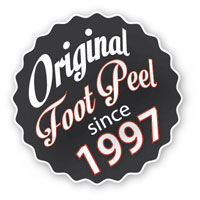If the heel lining in your athletic shoes seems to wear out in months, you may be wondering what gives—beyond the nylon fabric and foam in the back of your sneaks, that is.
Shouldn’t that new pair of running shoes hold up better in the heel department based on how much you spent? One would think so, and yet your Achilles tendons somehow manage to cleave through the padding in record time.
It’s easy to chalk this phenomenon up to cheap materials, but it’s not always that simple. You’re not going to want to hear this, but sometimes user error plays a major role. That’s right—you may be doing something to make it worse.
So why exactly are the heels of your shoes getting shredded to smithereens? Bad news: There are a number of possible culprits. Good news: Changing your habits or reinforcing the weak spots may greatly extend the life of your shoes. And who doesn’t want that?
Let’s delve into what might be eroding the heel lining in epic fashion. You’ll also want to peruse our tips for protecting that precious cushioning. Shall we?
What’s wearing out the heel lining in my shoes?
What’s causing the heels of your shoes to break down may surprise you. Sure, that’s a high-friction area, but shouldn’t it stand up to normal wear and tear for more than a few months? There’s only one way to find out.
Podiatrists, runners and shoe store employees have some theories about why your heels are acting like hacksaws. Here’s a quick rundown of what might be at play and how you can rectify some bad habits to extend the life of your athletic shoes. Just how long, though, is anyone’s guess.
Your shoes don’t fit properly
New shoes are stiff. They may squish your toes or rub your heel the first few times you wear them. But they should loosen up. If they don’t, you probably bought shoes that were too small—and that’s a big problem.
When your heels constantly dig into the backs of your shoes, both surfaces take a beating. First, the lining will stretch and rip. Then your heels will gouge into the foam, creating the perfect environment for painful blisters.
Before you buy that next pair of athletic shoes, be sure to get properly fitted. Your heels shouldn’t be uncomfortably crammed into your kicks. It also helps to know what type of gait you have: normal pronation, overpronation (your foot rolls inward) or supination (your foot rolls outward). Your shoe wear patterns tell no tales. Check out these running shoe buying tips for overpronators and supinators.
You’re wearing the wrong socks
Unfortunately, the wrong socks can cancel out right-sized shoes. Run-of-the-mill cotton socks may be the easy choice, but they’re probably not the best choice for reducing friction.
Cotton is known for wicking away moisture, but it’s still going to get trapped between your heel and the shoe. Sweaty cotton socks have a tendency to pill and fray, which only exacerbates the rubbing you’re trying to avoid.
Try medium weight merino wool running socks or socks with extra padding on the heels. Wearing shoes that fit well and upgrading your socks could be the one-two punch you need to help the heel lining in your shoes survive longer.
Your on/off technique is making things worse
How you put your shoes on and take them off also makes a big difference. Repeatedly shoving your feet in or prying them out takes a toll on the heel lining. That’s totally preventable wear and tear. Somebody pass the shoehorn!
A shoehorn may be a bit of a stretch, but there are steps you can take to avoid this destructive practice. Start by really loosening your laces so your foot can easily slip in and out. You can also use your thumb as a buffer for your heel when putting your sneaks on. And once your foot’s in, try lock lacing to keep your heels put when you’re walking or running.
How to reinforce the heels of your shoes
Need tips for reinforcing the heels of your athletic shoes? We have those, too. Beefing up the rear padding right out of the gate can help keep those puppies in rotation a bit longer. Here’s our shortlist for how to pad the heel of a shoe:
- Specially made inserts – Forward-thinking companies like Shoe Armour are on a mission to “eliminate the premature death of shoes.” Made of ballistic fabric, these foldable inserts won’t stop a bullet, but they may keep your heels from chewing through the back of your shoes.
- Fabric covered gel sheeting – Sometimes, the best solution comes with a hefty price tag. This ⅛-inch orthopedic gel sheeting isn’t cheap, but it is effective. Silipos also sells these cool gel squares infused with mineral oil that can be washed and reused.
- Heel grips or hole prevention patches – Heel grips are another affordable option that earn high marks, and Dr.Foot sells them in multiple colors. These hole prevention patches made of synthetic leather cover even more surface area.
- Mole skin – Some people swear by the old standby—moleskin for shoes. In our experience, though, these adhesive sheets are better for temporary use when you already have blisters. They have a tendency to roll up or shift around when there’s a fair amount of friction (think jogging or spinning).
Now you know how to stop the heels of your shoes from wearing down. Think of all the money you’ll save from not having to replace athletic shoes every few months. Why not celebrate with a Baby Foot exfoliating foot peel?


